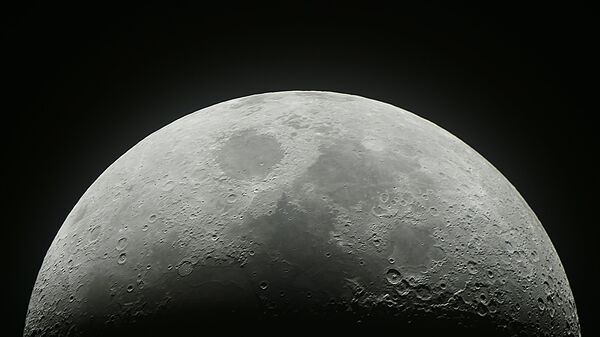NASA scientists have found evidence to suggest that surface water on the Moon has been hidden in plain sight for decades, according to a bombshell lunar meteor impact study.
NASA researchers at the John Hopkins University Applied Physics Laboratory believe powerful meteor showers release water vapour into the Moon’s atmosphere, in a discovery that could solve a decades-old mystery.
More recently, NASA’s Lunar Reconnaissance Orbiter (LRO) also detected evidence of “bouncing water molecules” on the surface.
Now, thanks to the incredible discovery presented this week in the journal Nature Geosciences, scientists are excited to learn more about how meteor streams helped populate the Moon’s thin atmosphere with water vapour.
READ MORE: UAE Names First Astronaut to Fly to ISS on Board Russian Soyuz Vehicle (PHOTOS)
Lead author Mehdi Benna of NASA’s Goddard Space Flight Centre said the study has also helped identify four previously undetected meteor showers.
Dr Benna said: “We traced most of these events to known meteoroid streams, but the really surprising part is that we also found evidence of four meteoroid streams that were previously undiscovered.”
The water-releasing impacts occurred on 9 January, 2 April, 5 April and 9 April 9 in 2014.
Meteor showers bring moon geysers. https://t.co/GYE1ixg1Fu
— Science News (@ScienceNews) April 16, 2019
The spikes in the Moon’s atmospheric water levels were all recorded by NASA’s Lunar Atmosphere and Dust Environment Explorer (LADEE). LADEE was dispatched to the Moon to study its atmosphere, and subsequently discovered that “sufficiently large” meteor strikes had breached the upper levels of the Moon’s soil, enough to release water from lower, hydrated levels.
According to NASA, meteors need to penetrate the Moon’s surface by at least three inches (eight centimetres) to release water.
The US space agency said there is strong evidence of water (H2O) and hydroxyl (OH) locked away within the Moon.
READ MORE: Beresheet 2: Israeli SpaceIL Announces New Mission to Land Spacecraft on Moon
Scientists had already known the moon wasn’t bone-dry once you'd scratched the surfice, with researchers confirming the presence of ice on the ground around the lunar north and south poles in 2018 studies. Meteor impacts can now be viewed as a likely alternative to how water finds its way into the Moon’s atmosphere.
Nonetheless, scientists are still hesitant to say just how much water there is, how it got there and where it is stored, with one explanation being that ionised hydrogen carried to the Moon on solar winds from the Sun could explain the presence of water.
But where does the water come from? According to Dr. Benna, the water is most likely ancient in origin, dating back to the Moon’s formation, or was deposited there “early in its history”.
Whatever the case may be, the new research has ruled out the water is being left on the Moon by the meteor showers themselves.



